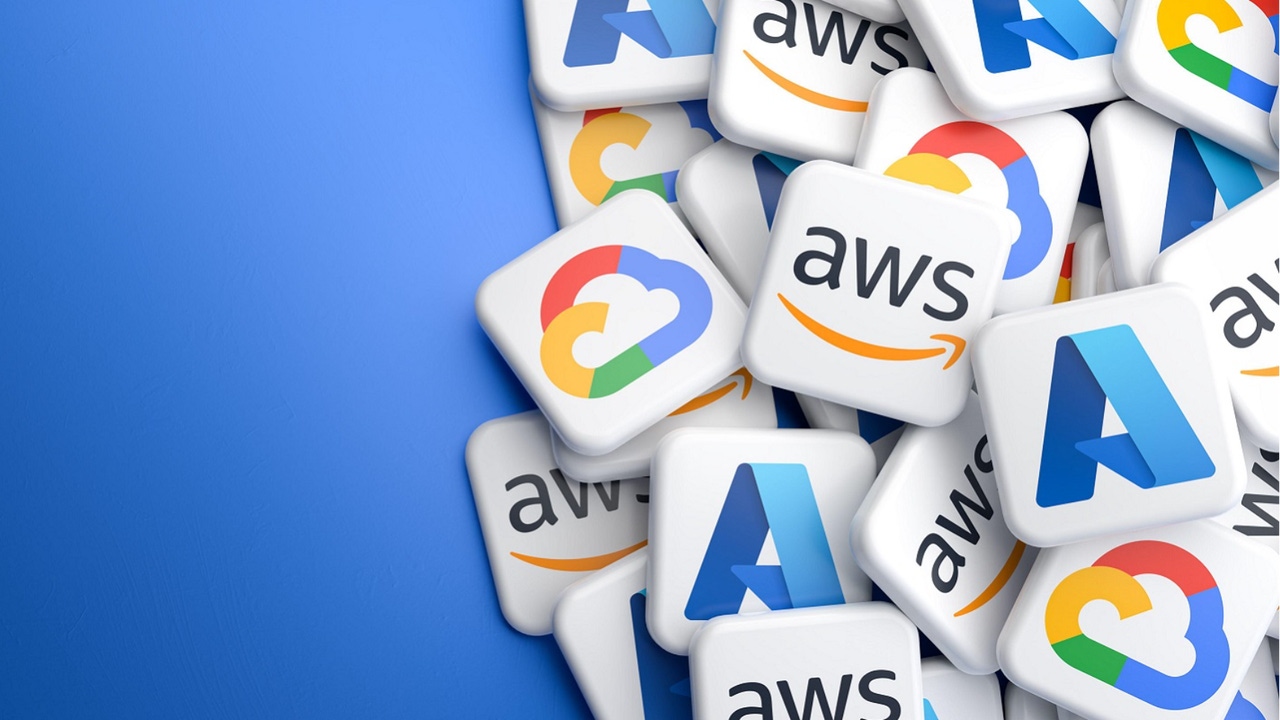Cisco takes aim at developing quantum data center

On top of the quantum network fabric effort, Cisco is developing a software package that includes the best way for entanglement, distribution effort, protocol, and routing algorithms, which the company is building in a protocol stack and compiler, called Quantum Orchestra. “We are developing a network-aware quantum orchestrator, which is this general framework that takes quantum jobs in terms of quantum circuits as an input, as well as the network topology, which also includes how and where the different quantum devices are distributed inside the network,” said Hassan Shapourian, Technical Leader, Cisco Outshift. “The orchestrator will let us modify a circuit for better distributability. Also, we’re going to decide which logical [quantum variational circuit] QVC to assign to which quantum device and how it will communicate with which device inside a rack.” “After that we need to schedule a set of switch configurations to enable end-to-end entanglement generations [to ensure actual connectivity]. And that involves routing as well as resource management, because, we’re going to share resources, and eventually the goal is to minimize the execution time or minimize the switching events, and the output would be a set of instructions to the switches,” Shapourian said.
How CIOs Can Fix Data Governance For Generative AI
When you look at it from a consumption standpoint, the enrichment of AI happens
as you start increasing the canvas of data it can pick up, because it learns
more. That means it needs very clean information. It needs [to be] more
accurate, because you push in something rough, it’s going to be all trash.
Traditional AI ensured that we have started cleaning the data, and metadata told
us if there is more data available. AI has started pushing people to create more
metadata, classification, cleaner data, reduce duplicates, ensure that there is
a synergy between the sets of the data, and they’re not redundant. It’s cleaner,
it’s more current, it’s real-time. Gen AI has gone a step forward. If you want
to contextually make it rich, you want to pull in more RAGs into these kinds of
solutions, you need to know exactly where the data sits today. You need to know
exactly what is in the data to create a RAG pipeline, which is clean enough for
it to generate very accurate answers. Consumption is driving behavior. In
multiple ways, it is actually driving organizations to start thinking about
categorization, access controls, governance. [An AI platform] also needs to know
the history of the data. All these things have started happening now to do this because this is very complex.
Here’s the paper no one read before declaring the demise of modern cryptography

With no original paper to reference, many news outlets searched the Chinese
Journal of Computers for similar research and came up with this paper. It wasn’t
published in September, as the news article reported, but it was written by the
same researchers and referenced the “D-Wave Advantage”—a type of quantum
computer sold by Canada-based D-Wave Quantum Systems—in the title. Some of the
follow-on articles bought the misinformation hook, line, and sinker, repeating
incorrectly that the fall of RSA was upon us. People got that idea because the
May paper claimed to have used a D-Wave system to factor a 50-bit RSA integer.
Other publications correctly debunked the claims in the South China Morning Post
but mistakenly cited the May paper and noted the inconsistencies between what it
claimed and what the news outlet reported. ... It reports using a D-Wave-enabled
quantum annealer to find “integral distinguishers up to 9-rounds” in the
encryption algorithms known as PRESENT, GIFT-64, and RECTANGLE. All three are
symmetric encryption algorithms built on a SPN—short for
substitution-permutation network structure.
AI Has Created a Paradox in Data Cleansing and Management
When asked about the practices required to maintain a cleansed data set,
Perkins-Munn states that in that state, it is critical to think about enhancing
data cleaning and quality management. Delving further, she states that there are
many ways to maintain it over time and discusses a few that include AI
algorithms revolving around automated data profiling and anomaly detection.
Particularly in the case of unsupervised learning models, AI algorithms
automatically profile data sets and detect anomalies or outliers. Continuous
data monitoring is one ongoing way to keep data clean. She also mentions
intelligent data matching and deduplication, wherein machine learning algorithms
improve the accuracy and efficiency of data matching and duplication processes.
Apart from those, there are fuzzy matching algorithms that can identify and
merge duplicate records even with minimal variations or errors. Moving forward,
Perkins-Munn states that for effective data management, organizations must
prioritize where to start with data cleansing, and there is no
one-method-fits-all approach to it. She advises to focus on cleaning the data
that directly impacts the most critical business process or decision, thus
ensuring quick, tangible value.
A brief summary of language model finetuning

For language models, there are two primary goals that a practitioner will have
when performing fine tuning: Knowledge injection: Teach the model how to
leverage new sources of knowledge (not present during pretraining) when
solving problems. Alignment (or style/format specification): Modify the way in
which the language model surfaces its existing knowledge base; e.g., abide by
a certain answer format, use a new style/tone of voice, avoid outputting
incorrect information, and more. Given this information, we might wonder:
Which fine-tuning techniques should we use to accomplish either (or both) of
these goals? To answer this question, we need to take a much deeper look at
recent research on the topic of fine tuning. ... We don’t need tons of data to
learn the style or format of output, only to learn new knowledge. When
performing fine tuning, it’s very important that we know which goal—either
alignment or knowledge injection—that we are aiming for. Then, we should put
benchmarks in place that allow us to accurately and comprehensively assess
whether that goal was accomplished or not. Imitation models failed to do this,
which led to a bunch of misleading claims/results!
Bridging Tech and Policy: Insights on Privacy and AI from IndiaFOSS 2024
Global communication systems are predominantly managed and governed by major
technology corporations, often referred to as Big Tech. These organizations
exert significant influence over how information flows across the world, yet
they lack a nuanced understanding of the socio-political dynamics in the Global
South. Pratik Sinha, co-founder at Alt News, spoke about how this gap in
understanding can have severe consequences, particularly when it comes to issues
such as misinformation, hate speech, and the spread of harmful content. ... The
FOSS community is uniquely positioned to address these challenges by
collaboratively developing communication systems tailored to the specific needs
of various regions. Pratik suggested that by leveraging open-source principles,
the FOSS community can create platforms (such as Mastodon) that empower users,
enhance local governance, and foster a culture of shared responsibility in
content moderation. In doing so, they can provide viable alternatives to Big
Tech, ensuring that communication systems serve the diverse needs of communities
rather than being controlled by a handful of corporations with a limited
understanding of local complexities.
Revealing causal links in complex systems: New algorithm reveals hidden influences

In their new approach, the engineers took a page from information theory—the
science of how messages are communicated through a network, based on a theory
formulated by the late MIT professor emeritus Claude Shannon. The team developed
an algorithm to evaluate any complex system of variables as a messaging network.
"We treat the system as a network, and variables transfer information to each
other in a way that can be measured," Lozano-Durán explains. "If one variable is
sending messages to another, that implies it must have some influence. That's
the idea of using information propagation to measure causality." The new
algorithm evaluates multiple variables simultaneously, rather than taking on one
pair of variables at a time, as other methods do. The algorithm defines
information as the likelihood that a change in one variable will also see a
change in another. This likelihood—and therefore, the information that is
exchanged between variables—can get stronger or weaker as the algorithm
evaluates more data of the system over time. In the end, the method generates a
map of causality that shows which variables in the network are strongly
linked.
Proactive Preparation: Learning From Crowdstrike Chaos
You can’t plan for every scenario. However, having contingency plans can
significantly minimise disruption if worse case scenarios occur. Clear guidance,
such as knowing who to speak to about the situation and when during outages, can
help financial organisations quickly identify faults in their supply chains and
restore services. ... Contractual obligations with software suppliers provide an
added layer of protection if issues arise. These ensure that there’s a legally
binding agreement in place to ensure suppliers handle the issue effectively.
Escrow agreements are also key. They protect the critical source code behind
applications by keeping a current copy in escrow and can help organisations
manage risk if a supplier can no longer provide software or updates. ... supply
chains are complex. Software providers also rely on their own suppliers,
creating an interconnected web of dependencies. Organisations in the sector
should understand their suppliers’ contingency plans to handle disruptions in
their wider supply chain. Knowing these plans provides peace of mind that
suppliers are also prepared for disruptions and have effective steps in place to
minimise any impact.
AI Drives Major Gains for Big 3 Cloud Giants

"Over the last four quarters, the market has grown by almost $16 billion, while
over the previous four quarters the respective figure was $10 billion," John
Dinsdale, chief analyst at Synergy Research Group, wrote in a statement. "Given
the already massive size of the market, we are seeing an impressive surge in
growth." ... The Azure OpenAI Service emerged as a particular bright spot,
with usage more than doubling over the past six months. AI-based cloud services
overall are helping Microsoft's cloud business. ... According to Pichai, Google
Cloud's success is focused around five strategic areas. First, its AI
infrastructure demonstrated leading performance through advances in storage,
compute, and software. Second, the enterprise AI platform, Vertex, showed
remarkable growth, with Gemini API calls increasing nearly 14 times over a
six-month period. ... Looking ahead, AWS plans increased capital expenditure to
support AI growth. "It is a really unusually large, maybe once-in-a-lifetime
type of opportunity," Jassy said about the potential of generative AI. "I think
our customers, the business, and our shareholders will feel good about this long
term that we're aggressively pursuing it."
GreyNoise: AI’s Central Role in Detecting Security Flaws in IoT Devices
GreyNoise’s Sift is powered by large language models (LLMs) that are trained on
a massive amount of internet traffic – including which targets targeting IoT
devices – that can identify anomalies in the traffic that traditional system
could miss, they wrote. They said Sift can spot new anomalies and threats that
haven’t been identified or don’t fit the known signatures of known threats. The
honeypot analyzes real-time traffic and uses the vendor’s proprietary datasets
and then runs the data through AI systems to separate routine internet activity
from possible threats, which whittles down what human researchers need to focus
on and delivers faster and more accurate results. ... The discovery of the
vulnerabilities highlights the larger security issues for an IoT environment
that number 18 billion devices worldwide this year and could grow to 32.1
billion by 2030. “Industrial and critical infrastructure sectors rely on these
devices for operational efficiency and real-time monitoring,” the GreyNoise
researchers wrote. “However, the sheer volume of data generated makes it
challenging for traditional tools to discern genuine threats from routine
network traffic, leaving systems vulnerable to sophisticated attacks.”
Quote for the day:
"If you're not confused, you're not
paying attention." -- Tom Peters
No comments:
Post a Comment